How to care for your lawn in the fall in order to properly prepare for winter: autumn watering, fertilizing, cutting, aeration
In the spring, you are incredibly happy with all the herbs that reign on your lawn. However, if you want your green lawn to amaze you with its emerald color next season, in other words, in order for the lawn to grow and develop well, you need to properly care for the grass in the fall and take mandatory measures to prepare it for winter.
You will learn from our material what is included in the composition of the autumn measures for the care and preparation of the lawn for winter - watering, dressing, mowing, aeration, etc.
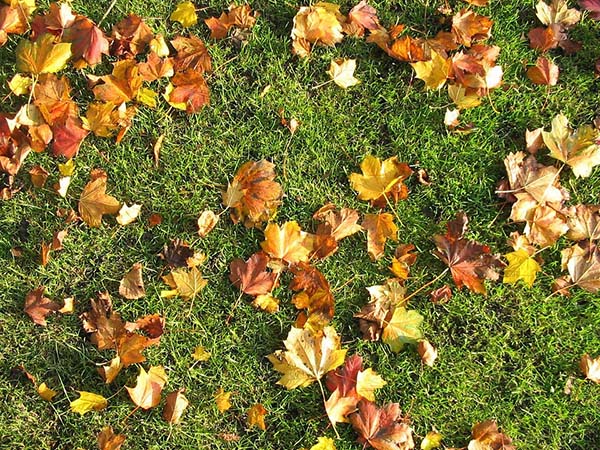
Content
What is included in the autumn lawn care and preparation for winter
The main autumn activities for the care and preparation of the lawn for winter are as follows:
- watering;
- top dressing;
- a haircut;
- leveling the surface of the site (if necessary);
- aeration;
- garbage (leaves) collection.
Note! All activities should be carried out only in dry and preferably clear weather. Walking on wet grass in autumn or spring is prohibited, just like on snow in winter.
Watering the lawn in autumn
If rains come along with autumn in your region, then the need for regular watering of the lawn practically disappears. But if the drought continues, then at least once a week or even a little more often you need to water the grass.
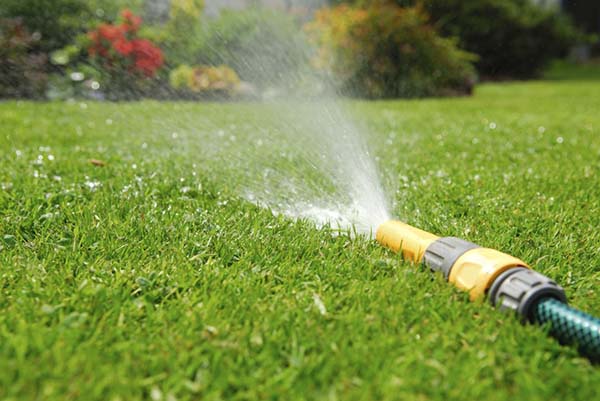
Naturally, the best and only correct method of watering lawn grass is by sprinkling.
Watering of the lawn, as a rule, is stopped together with a decrease in temperature, somewhere simultaneously with the last mowing, because in no case is it recommended to provoke freezing of the moist soil.
Important! If you notice that puddles form in certain places, and as you know, moisture stagnation is extremely detrimental to the lawn (leads to decay), you should level the surface as soon as possible, which will be discussed later.
Autumn feeding
Note! Autumn lawn no nitrogen fertilizers neededthat contribute to the growth and build-up of green mass. They are needed only in spring and summer, but not in the fall.
Autumn dressing of the lawn is carried out in order to strengthen its root system so that the grass becomes more frost-resistant, because we are talking about preparing it for winter, which means for frost.
To stimulate root growth (phosphorus) and increase disease resistance (potassium) in the fall, the lawn grass should be fed with phosphorus-potassium fertilizers.
Important! Feeding the lawn, like any other plants, should only be done on wet soil, so it would seem necessary to water it first. However, in the case of a lawn, on the contrary, it is recommended to water after an even distribution of fertilizers over the dry grass, which can be done using a special device.
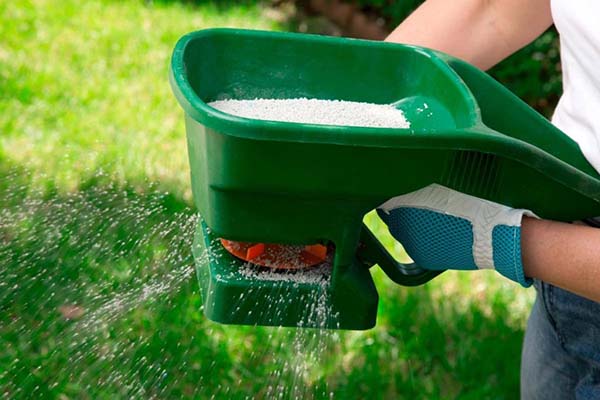
It is optimal to use as a phosphorus supplement double superphosphate (30-40 grams per 1 square meter of land).
Potash fertilizers: potassium sulfate (20-30 grams per 1 square meter) or wood ash (100-200 grams per 1 square meter of land).
By the way! Exists ready-made complex fertilizers for feeding the lawn in the fall.
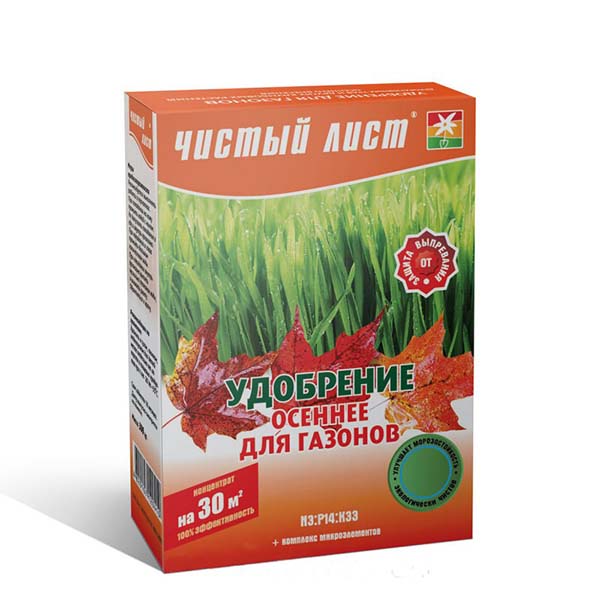
Important! If you decide to feed the lawn after mowing, then it should be done in 1-2 days, giving time to "heal the wounds."
Last mow before winter
The optimal height to mow the grass during the last autumn cut is 6-8 centimeters.
So why mow the lawn before wintering? If you leave tall grass (above 10 cm), then it will surely fall down during frosts and crumb over in winter. If the grass is too low (less than 6 cm), then it may simply freeze.

As for the specific dates when you can mow the lawn for the last time before winter, you first need to follow the weather forecast. The last haircut is recommended no later than 2 weeks before frost. Thus, on average, in the south it is the end of October-beginning of November, in the middle zone (Moscow region) - the second half of September-early October, in the Urals and Siberia - the first half of September.
Important! All mowed grass must be removed.
Video: when and how (by how much) to mow the lawn before winter and other autumn care
Leveling the lawn surface
So that puddles do not form on the lawn in winter, during thaws (in the lowlands), which then turn into an ice crust (because of which the grass will not be able to breathe, the roots will not receive oxygen, and as a result, in the spring there will be a bald patch), in the fall, it is necessary to carry out a mandatory alignment.
How to level the site? For this you need sand and leaf humus. Pour this mixture into pits, other irregularities and tamp it.
By the way! If the surface of the grass is uneven, there is a relief, then in the lowlands the lawn can receive too much fertilizer, and on the hills, on the contrary, it will receive less fertilizer, which is why, as a rule, the grass is burned out (in the lowland).Therefore, in order for the nutrients to be evenly distributed over the area, it must be even.
Lawn aeration in autumn
One of the main measures for preparing the lawn for winter is its autumn aeration.
Let's remember! Aeration (ventilation) of the lawn is the saturation of the soil with oxygen by piercing the sod layer. Moreover, this procedure must be carried out at least 3 times per season: in the spring during the restoration of lawn grass after winter, in the summer and, in fact, in the fall.
Aeration of the lawn grass can be carried out either with the help of a special electric or gasoline aerator (scarifier), or you can use mechanical means, be it aerator sandals or garden pitchfork. There is also a special aerator roller.

Aeration with a garden fork is carried out as follows: you should pierce the soil to a depth of 15-20 cm and every 15-20 cm, while you need to slightly raise the layer of turf, as if tilting it towards you (placing the forks at an angle).
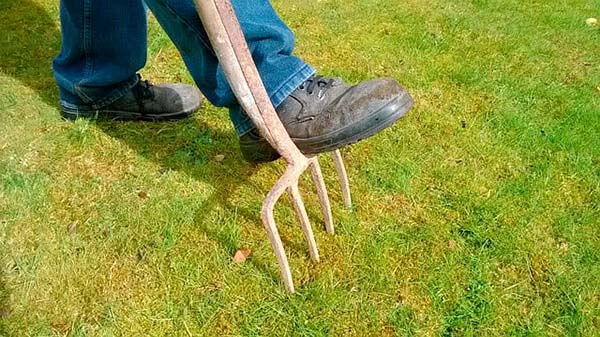
What is the purpose of aerating the lawn in the fall? This procedure will additionally protect your lawn from the formation of an ice crust on it in winter, since moisture can easily penetrate into the soil (lower soil layers), and the roots of the grass can receive the necessary oxygen.
Important! If a mole net is laid under your lawn (at a depth of 5-10 cm), then aeration for the winter still needs to be done, but it is better to pierce the ground more carefully with ordinary garden forks.
Cleaning of leaves and other debris
After all the activities, it is necessary to carry out an autumn sanitary cleaning of the lawn, during which all leaves and other debris (all sorts of sticks and the like) should be removed. The most convenient (easier to work) is to do this with a fan rake.
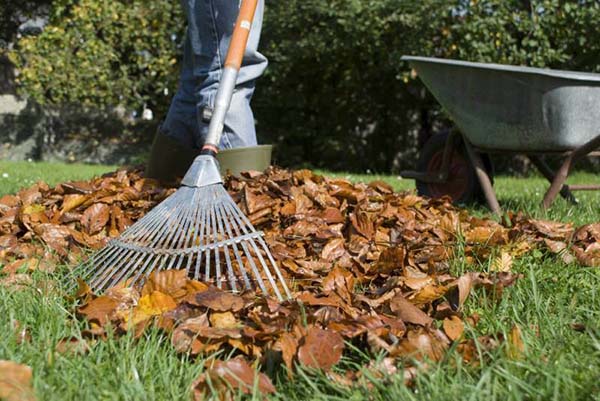
By the way! You can remove leaves from the lawn at the same time as its last mow.
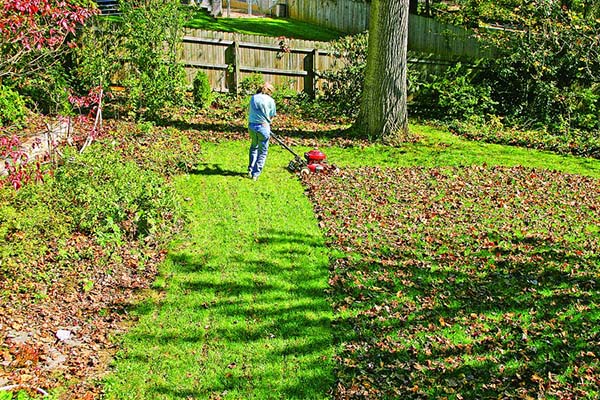
If this is not done and all the garbage is left on the site, a crust of caked leaves will be created, in which various microorganisms are formed, which will contribute to the appearance and reproduction of pathogenic flora (mold, bacteria, microbes). In addition, it will become a kind of natural barrier for the normal flow of oxygen to the roots. As a result, in the spring you will see serious bald patches, which means you will have to repair the lawn and overseeding the grass.
Advice! You should not throw large piles of snow on your lawn in winter. It must be distributed over the surface evenly. Naturally, under the huge snowdrifts the grass will not feel comfortable, which means that in spring there is a high probability of seeing a bald patch on this place ...
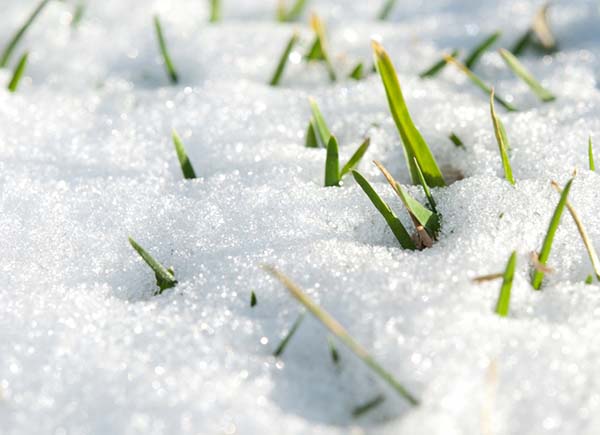
Thus, if you strain a little in the fall and properly prepare your lawn for winter, then in the spring you will not need to spend a lot of time and effort restoring the lawn grass after winter. No wonder they say: "Prepare the sleigh in the summer, and the lawn in the fall!"

